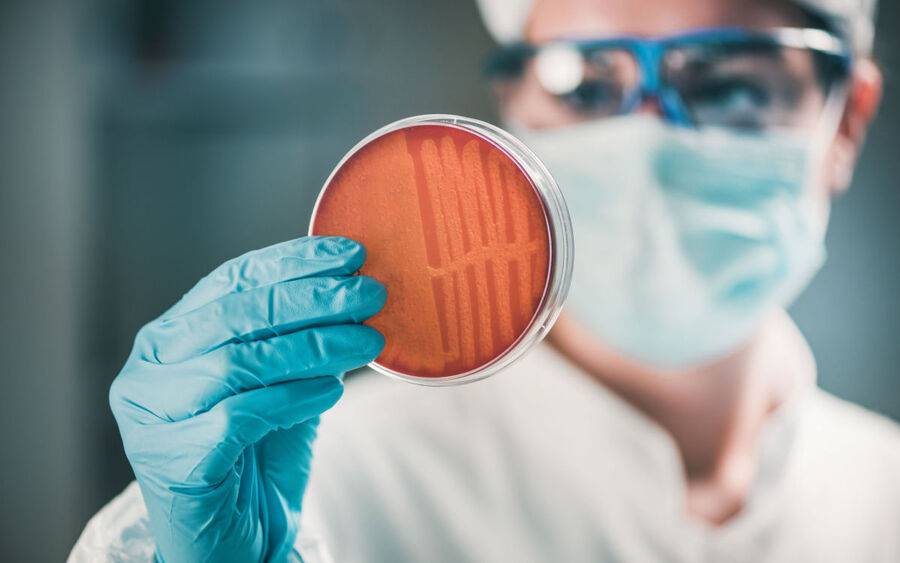What Is an MRSA Staph Infection?
MRSA is antibiotic resistant and difficult to treat

MRSA is antibiotic resistant and difficult to treat
MRSA stands for methicillin-resistant Staphylococcus aureus, often pronounced “mersa.”
MRSA infections are caused by a type of staph bacteria and are difficult — sometimes impossible — to treat and can lead to more serious health problems.
What is a MRSA staph infection?
Staph bacteria are commonly found on the skin or in the nose and are usually harmless, but problems can arise when there is a strain that causes an infection that cannot be treated with standard antibiotics. These antibiotics lose their effectiveness when they are used to treat antibiotic-resistant bacteria.
“While most staph infections are treatable, MRSA staph infections are more difficult to cure because the bacteria may be resistant to multiple classes of antibiotics,” says Alex Vo, MD, a family medicine physician at Scripps Clinic Liberty Station in Point Loma.
Why is MRSA a problem?
Antibiotic resistance limits treatment options. Without effective treatment, MRSA can lead to pneumonia, infections of the bloodstream, urinary tract or surgical wounds and other illnesses.
Significant efforts have been made to prevent the spread of antibiotic resistant bacterial infections.
“MRSA infections can be prevented or kept from spreading by taking precautions, including frequent handwashing, keeping wounds clean and covered until healed and not sharing personal items, such as towels and razors,” Dr. Vo says.
What are types of MRSA?
The two main types of MRSA are health care associated and community associated.
What is HA-MRSA?
Healthcare-associated MRSA or HA-MRSA mainly affects hospital patients, nursing home residents and people with weak immune systems. Infections can occur around surgical wounds or invasive devices. Infected health care workers can also spread the disease.
HA-MRSA is generally more likely to cause serious complications, such as pneumonia, UTI and sepsis.
HA-MRSA infections have been decreasing due to greater preventive measures, according to the Centers for Disease Control and Prevention (CDC).
What is CA-MRSA?
MRSA has become more common outside health care settings, where it can affect healthy people. This strain is called Community-associated MRSA or CA-MRSA.
CA-MRSA infections usually look like a pimple or boil and may be red and swollen. The infection site may be painful or have a discharge.
How is CA-MRSA spread?
CA-MRSA infections can spread through skin-to-skin contact and shared equipment or supplies. Infections often involve scrapes and cuts.
Athletes, daycare and school students and military personnel in barracks are among the most at risk.
People at risk should avoid:
- Poor hygiene and crowded living conditions
- Sharing towels and athletic equipment
- Injecting drugs
The opioid epidemic has been linked to a rise of staph infections in communities, according to the CDC.
What are symptoms of MRSA?
Symptoms of MRSA depend on the location of the skin infection. Most appear as a bump or infected area and may be:
- Red
- Swollen
- Painful
- Warm to the touch
- Full of pus
- Accompanied by fever
Do not pick or pop the sore. Cover it with clean, dry bandages until you can see a doctor.
“If you have a skin infection that looks or feels worse, call your doctor right away,” Dr. Vo says. “Getting medical care early reduces the chance that the infection will become serious.”
How is MRSA treated?
While MRSA is resistant to standard antibiotics, others may still work. Some infections can be treated with oral antibiotics. A skin boil caused by MRSA may just need to be drained.
Severe infections or MRSA in the bloodstream usually require intravenous antibiotics.
What are protections against MRSA?
To help protect yourself, keep these tips in mind:
- Wash your hands often and thoroughly with soap and water
- Keep wounds covered and clean until healed
- Avoid touching other people’s wounds or bandages.
- Don’t share personal items
- Dry clothes and towels in a hot dryer
- Keep shared surfaces clean and sanitized